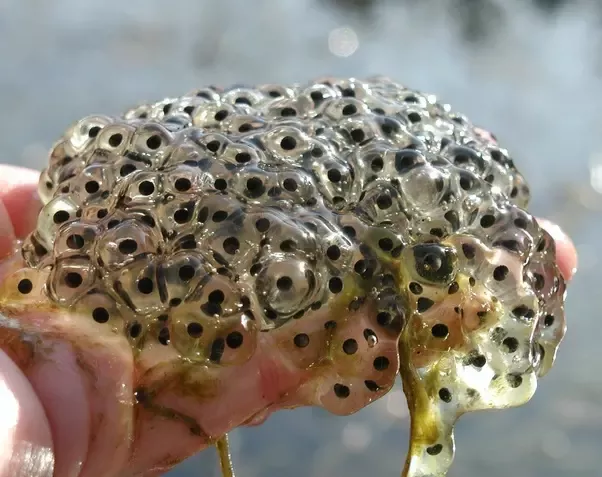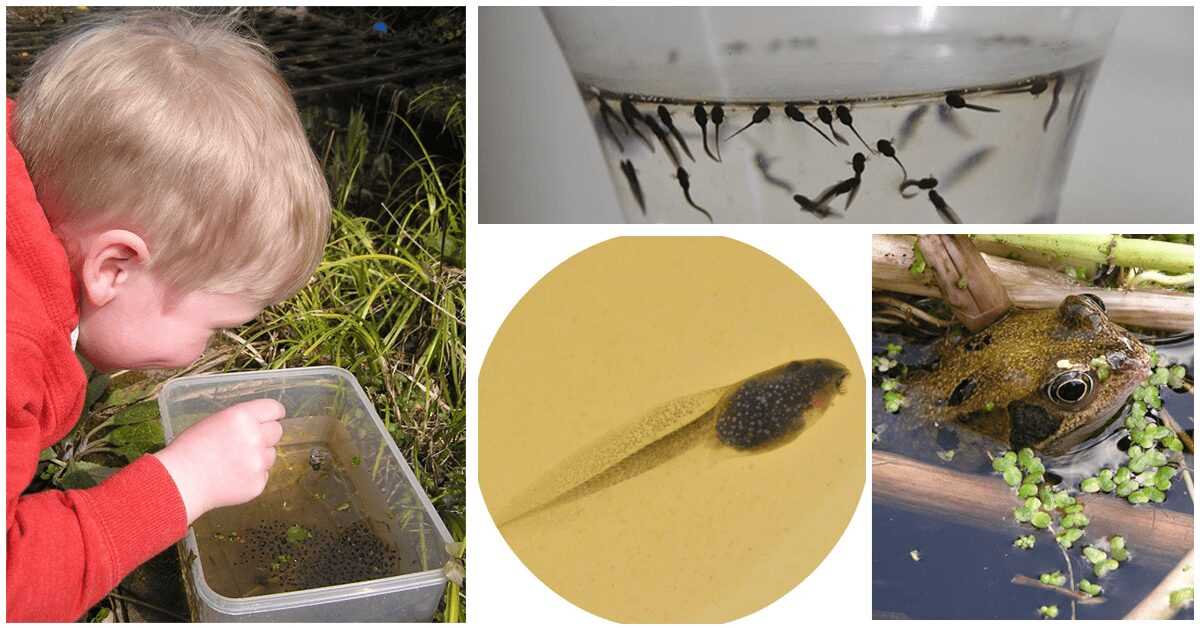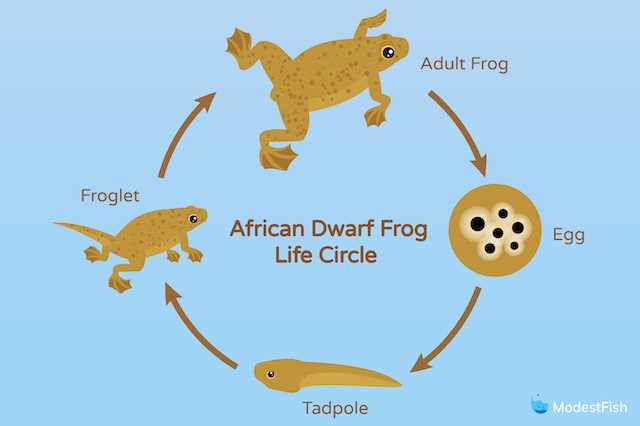How to Raise Frogs: Selecting the Right Species
| Consider the Climate | Different frog species have different temperature and humidity requirements. Consider the climate in your area and choose a species that can thrive in those conditions. |
|---|---|
| Research the Lifespan | |
| Take Care of Size | Frog species vary in size from very small to quite large. Consider the space you have available for the habitat and choose a species accordingly. |
| Consider the Diet | Research the dietary requirements of different frog species. Some frogs eat mainly insects, while others may require a more varied diet. Choose a species that aligns with the availability of suitable food sources. |
| Consider Noise Levels |
By considering these factors and doing thorough research on different frog species, you can select the right species that aligns with your preferences, environment, and level of commitment. Remember to provide proper care and attention to ensure the well-being and happiness of your frogs throughout their lives.
Tips for Raising Frog Eggs: Creating a Suitable Habitat
1. Choose the Right Container : Select a container that is large enough to accommodate the number of eggs you have. It should also have a lid or cover to prevent the eggs from escaping and to maintain consistent humidity levels.
2. Add Substrate and Water : Line the bottom of the container with a suitable substrate, such as damp soil or moss, to mimic the natural environment of the frogs. Fill the container with clean, dechlorinated water to an appropriate depth, ensuring that there is enough water for the eggs to be partially submerged.
3. Create a Safe and Secure Environment : Place the container in a quiet and undisturbed area to minimize stress on the eggs. Avoid placing the container near direct sunlight or drafty areas, as extreme temperature fluctuations can be harmful to the developing eggs.
5. Provide Adequate Ventilation : While maintaining a humid environment is important, it’s equally crucial to ensure proper air circulation. Avoid sealing the container completely, as this can lead to a buildup of harmful gases and mold growth. Instead, provide ventilation holes or use a mesh lid to allow fresh air to enter the habitat.
6. Add Natural Elements : To create a more natural and stimulating habitat, you can add various natural elements such as rocks, branches, and plants. These will not only provide hiding spots for the tadpoles but also encourage natural behaviors and development.
7. Monitor Water Quality : Regularly test the water parameters, including pH, ammonia, nitrite, and nitrate levels, to ensure clean and healthy water for the growing tadpoles. Make necessary water changes and adjustments to maintain optimal water quality.
By following these tips and providing a suitable habitat for your frog eggs, you are giving them the best chance for survival and successful development. Remember to conduct proper research on the specific needs of your frog species and make necessary adjustments accordingly. Good luck!
Tips for Raising Frog Eggs: Providing Proper Nutrition

1. Start with a nutritious diet: Tadpoles primarily feed on algae and other aquatic plants. You can provide them with a well-balanced diet by introducing spirulina flakes, lettuce, and spinach. These foods are rich in essential nutrients and minerals that support their growth.
4. Feed in small portions: It is advisable to offer the tadpoles small portions of food multiple times a day rather than feeding them a large amount at once. This allows them to consume the food easily and prevents overfeeding, which can lead to water pollution.
5. Remove uneaten food: After each feeding, make sure to remove any uneaten food from the tank. Leaving the food in the tank can cause water quality issues and promote the growth of harmful bacteria.
6. Consider specialized tadpole food: If you find it difficult to provide a balanced diet using natural food sources, you can consider using specialized tadpole food available in pet stores. These foods are designed to provide the necessary nutrients for tadpole development.
By following these tips and providing proper nutrition, you can ensure the healthy growth and development of the frog eggs into tadpoles and eventually, mature frogs.
Tips on How to Maintain Water Quality for Frog Eggs
1. Use Dechlorinated Water
Before adding water to the tank or container where you will be keeping the frog eggs, make sure to use dechlorinated water. Chlorine and other chemicals found in tap water can be harmful to the eggs. Dechlorination can be achieved by using a water conditioner or by letting the water sit for 24 hours to allow the chlorine to dissipate naturally.
2. Provide Proper Filtration
Frog eggs require clean and oxygenated water for healthy development. Using a filtration system, such as a sponge filter or an air stone, can help maintain water quality by removing debris and increasing oxygen levels. The filter should be gentle enough to avoid disturbing the eggs but still effective in keeping the water clean.
3. Monitor Ammonia and Nitrite Levels

Ammonia and nitrite are byproducts of organic waste and can be highly toxic to frog eggs. Regularly test the water for these substances using a reliable test kit. If ammonia and nitrite levels are high, take immediate action to reduce them, such as performing partial water changes or adding beneficial bacteria to help break down waste.
4. Keep the Water pH Balanced
Frog eggs thrive in water with a neutral pH level. Use a pH test kit to monitor the acidity or alkalinity of the water and make adjustments if necessary. Add pH buffer or adjust the water source to maintain a pH level between 6.5 and 7.5, which is ideal for the development of frog eggs.
5. Regularly Inspect and Clean the Tank
Regular inspections of the tank or container housing the frog eggs are essential to ensure water quality. Remove any uneaten food, debris, or dead plant matter promptly to prevent the buildup of harmful substances. Keeping the tank clean and well-maintained will help create a healthy environment for the eggs.
| Aspect | Optimal Range |
|---|---|
| Temperature | Depends on frog species |
| Lighting | 12-14 hours of light per day |
| Water Depth | Varies by species, typically a few inches |
| Water Temperature | Depends on frog species |
By following these tips and maintaining optimal water quality, you can greatly increase the chances of successfully raising frog eggs. Remember to regularly monitor and adjust the water conditions to provide the best possible environment for the eggs’ development and growth.
Controlling Temperature and Lighting to Raise Frog Eggs
Controlling the temperature and lighting conditions is crucial when raising frog eggs. These factors play a significant role in the development and growth of the eggs, ensuring their optimum survival.
1. Temperature

An aquarium heater can be used to regulate the temperature of the water. Set it to the recommended temperature for your frog species and monitor it regularly to ensure it remains stable. Sudden fluctuations in temperature can be detrimental to the eggs’ development.
2. Lighting
Lighting is another critical aspect of raising frog eggs. Light plays a vital role in the circadian rhythm and overall development of the eggs. Most frog species require a specific amount of light, both natural and artificial, for their growth and metamorphosis.
Provide a suitable lighting setup for the eggs by using a combination of natural sunlight and artificial light sources. A timer can be used to regulate the light cycle, mimicking the natural day-night cycle. This will help the eggs develop properly and maintain healthy circadian rhythms.
Ensure that the lighting is not too harsh or too dim, as extreme conditions can negatively affect the eggs’ development. Aim for a balance and adjust the lighting as needed throughout the different stages of the eggs’ development.
By controlling the temperature and lighting conditions carefully, you can create an ideal environment for raising frog eggs. This will greatly increase their chances of successful hatching and ensure the healthy development of the tadpoles.
Tips for Monitoring Development and Metamorphosis of Frog Eggs
Here are some important tips for monitoring the development and metamorphosis of frog eggs:
1. Observation: Regularly observe the eggs to track their progress. Look for changes in size, shape, and color. Take notes and photographs to document the different stages of development.
2. Egg Mass: Keep an eye on the egg mass. The eggs will start as a gelatinous mass and gradually become individual embryos. Note any changes in the number of eggs, as this could indicate potential issues.
4. Water Quality: Ensure that the water quality remains optimal throughout the development process. Keep the water clean and free from pollutants, as any changes in water quality can affect the development of the eggs.
5. Temperature and Lighting: Control the temperature and lighting conditions in the habitat to mimic the natural environment of the species. Different frog species have different temperature and lighting requirements, so it’s essential to research and provide the ideal conditions for your specific eggs.
6. Feeding: Once the tadpoles hatch, provide them with suitable and nutritious food. Research the dietary requirements of the frog species you are raising and provide a balanced diet to promote healthy growth and development.
7. Record Keeping: Maintain a record of the growth and development milestones of the eggs. This will help you track any abnormalities or delays in the metamorphosis process. It will also provide valuable information for future reference or sharing with others interested in frog raising.
8. Seek Expert Advice: If you notice any concerning changes or have questions about the development or health of the eggs, seek advice from a frog expert or a local amphibian enthusiast. They can provide valuable insights and guidance specific to the species you are raising.
Tips for Raising Frog Eggs: How to Prevent Diseases and Parasites
1. Clean and maintain the habitat: Regularly clean the tank or pond where you are raising the frog eggs. Remove any debris, uneaten food, or dead plant matter that may become a breeding ground for bacteria and parasites. Keep the water clean and well-filtered to prevent the buildup of harmful toxins.
2. Quarantine new additions: If you are introducing new frogs or tadpoles to your existing population, quarantine them first in a separate tank. This will help prevent the spread of any potential diseases or parasites that they may carry. Observe them closely for any signs of illness before introducing them to the main habitat.
4. Provide a balanced diet: Proper nutrition is essential for the immune system of the tadpoles. Feed them a varied diet of small aquatic invertebrates, such as daphnia and brine shrimp. You can also supplement their diet with commercial tadpole pellets or finely chopped vegetables. Avoid overfeeding, as excess food can rot and cause water contamination.
5. Avoid overcrowding: Overcrowding can lead to stress and increased risk of diseases and parasites. Ensure that the habitat has enough space for each tadpole to swim freely. If necessary, separate tadpoles into multiple tanks or ponds to prevent overcrowding and minimize the risk of disease transmission.
6. Monitor for signs of illness: Regularly observe the tadpoles for any signs of illness or abnormal behavior, such as loss of appetite, lethargy, or discolored skin. If you notice any signs of illness, promptly isolate the affected tadpoles and consult a veterinarian who specializes in amphibians for proper diagnosis and treatment.
8. Educate yourself: Continuously educate yourself on the specific diseases and parasites that may affect the species of frog you are raising. This will help you recognize potential risks and take appropriate preventive measures. Stay up to date with research and seek guidance from experienced frog breeders or herpetologists to ensure the well-being of your frogs.
Tips on How to Raise Frog Eggs: Releasing into the Wild
Raising frog eggs can be a rewarding experience, but eventually, the time comes when you need to release the frogs into their natural habitat. Here are some important tips to consider when releasing frog eggs:
1. Choose the right location:
When releasing frog eggs, it is crucial to select a suitable location that closely resembles the natural habitat of the species. Research the preferred habitat of the particular frog species you are releasing and try to find a similar environment.
2. Timing is key:
Timing is essential when releasing frog eggs. The best time to release them is during the breeding season, when conditions are optimal for their survival. This increases the chances of the frog eggs successfully adapting to their new surroundings.
3. Provide a secure habitat:
Before releasing the frog eggs, ensure that the habitat is free from any potential threats or predators. Remove any hazards or invasive species that could harm the developing frogs. Creating a safe environment is crucial for their survival.
4. Gradual acclimatization:
5. Monitor the release:
Keep an eye on the released frog eggs to ensure they are adapting well to their new environment. Check for any signs of stress or illness and provide any necessary support or intervention.
6. Document and report:
If you are participating in a frog conservation program or scientific study, it is essential to document and report the release of frog eggs. This helps researchers and conservationists track the success of the program and monitor the health and growth of the released frogs.
7. Spread the knowledge:
Share your experience and knowledge about raising frog eggs and releasing them into the wild. By educating others about the importance of frog conservation and the steps involved in releasing frog eggs, you can contribute to the preservation of frog populations.
8. Respect natural ecosystems:
When releasing frog eggs, always remember to respect and protect the natural ecosystems. Avoid introducing any non-native species or disrupting the delicate balance of the habitat. This ensures the long-term health and sustainability of both the frogs and their environment.
By following these tips, you can increase the chances of a successful release when raising and releasing frog eggs. Remember, the goal is to support the growth and survival of frog populations while preserving their natural habitats.

I’m Lena Adams—a product of an unconventional upbringing in the African wilderness. My father, a daring explorer of African wildlife, sparked my fascination with reptiles, a passion that intertwined with the tragic loss of my mother during an expedition, leaving an indelible mark on my life. Driven to understand the creatures that captivated my parents, I embarked on my journey, sharing insights about reptiles, frogs, and lizards on my website. Through my explorations and conservation efforts, I honour my family’s legacy while seeking connections—to the creatures, nature, and the mother whose presence I yearn to understand.
